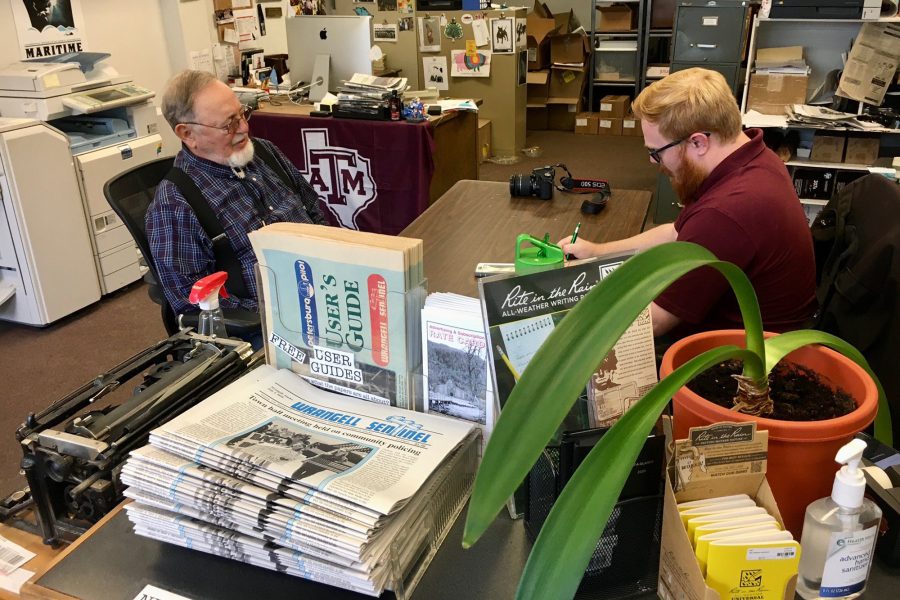Introducing the New Guaranteed Successful Model for Journalism (2024 Edition)
In which we look at all the things that are currently working in journalism and then Frankenstein them all together into one hideous, future-proof design.
|
Listen To This Story
|
I come from an alt-weekly background and if you’ve ever known an alt-weekly journalist, or read any of their work in papers conveniently located near bus stations, pop-up tattoo parlors, or anyplace derelict enough to host a rave, you know the average alt writer is an ugly and opportunistic breed. We had to be; competition was fierce. And for a time, we were the scrappiest animal on the streets. Now alt-weeklies are almost entirely gone, and anywhere one of these papers closed, the feral cat population went up.
All of which is to say my career has been about keeping one jaundiced eye peeled for some other paying gig. It’s made me an expert at spotting promising experiments. Now that the big dailies, magazines, and websites have more or less collapsed, there are a lot more shots in the dark from journalists trying something — anything — to keep afloat.
Based on my extensive research, I have cataloged the most promising and tentatively workable schemes for sustainable truth-telling, which I will synthesize here into an entirely new concept. I take as inspiration the example of Project Graham, a hypothetical human being reverse-engineered from the absurd and terrifying dangers of driving in a car to be able to survive a crash. At the end of this piece I’ll reveal a similar grotesquerie: the New Guaranteed Successful Model of Journalism (2024 Edition), capable of surviving every sort of impact in the current economic environment.
Government Inertia as a Strength
There are many things the government is good at not doing, and we are beginning to realize that one of the best uses of government vacuity is to not-tax newspapers for their essential services, and to not-tax small businesses for advertising with those newspapers.
There are a lot of flaws in a government-backed journalism scheme, but in theory it’s good for everybody: The outlets get a lifeline, and the understaffed IRS can spend its time chasing down the $150 billion that the richest Americans are hiding in their chalets’ bidets.
A dozen states have passed laws aimed at helping local journalism. Illinois is the latest, with two bipartisan bills proposed to increase government spending on local journalism, give tax breaks to local outlets and the small businesses that support them, and force the major internet platforms that sucked away journalism revenue — Google and Facebook — to pay for news content run on their platforms. The Soak-Big-Tech approach is interesting and controversial for reasons too complicated to get into here, but Europe, Canada, and Australia are all trying it out, so I consider it worth looking into.
Billionaire Money Is Like a Rainbow, Beautiful But Ephemeral
A rich guy bought The Washington Post. A rich guy bought The Los Angeles Times. A rich guy bought Time. A rich guy even started a new publication called The Messenger.
Those of us with the alt-weekly’s hyena gene will hungrily join the staffs of these organizations, maybe even unpack the company-provided laptop, but we don’t get too comfortable. In the last year, layoffs abound as it’s made clear that: a) the billionaire didn’t have a strategy for sustainability; b) the sustainability wasn’t profitable enough; and/or c) the billionaire remembered that yachts are a better way to throw money away because girls like yachts.
Still, don’t knock it: A keen journo-preneur can smell the musky optimism of a billionaire and should be ready to pounce.
When Billionaires Are Corporations, They’re Not to Be Trusted
Hedge funds have obliterated local journalism. These parasitic shitheels make your average vampire seem as gentle as the oatmeal buffet at a bed-and-breakfast. Outfits like Alden Capital are, I suppose, a form of scavenger that my alt-weekly brain should appreciate for its rapacity; and yet… nah. They swoop into troubled or mismanaged papers and buy them up, then reduce staff and spending to the lowest life-support levels, wring out all the profit they can, and chortle their way through the hospice center, picking the pockets of everyone gathered there to say goodbye to the newspapers that they themselves have rendered terminal.
But it didn’t have to be this way! Here’s what journalist and professor Margot Susca, author of the new book Hedged: How Private Investment Funds Helped Destroy American Newspapers and Undermine Democracy, told Politico:
[I]f private investment funds kept their paws off these papers, our local newspaper ecosystem would be better off. In 2021, the US newspaper industry generated $20.9 billion in revenue with profit margins just below 4 percent. That’s down from its wonder years, but it’s hardly a knockout.
So a New Model of Journalism must turn the hose on anyone from Wall Street if they show up on the porch looking to buy.

Small Is Big
Large, billionaire-funded newsrooms are rare enough; most startups these days are newsletters on Substack or podcasts or YouTube or TikTok where the focus is hyper-specific and generally obsessive. “Bee-in-the-bonnet” journalism, you might say.
But consumers like niche. No one built a screaming fanbase over multiple verticals dedicated to general interest. Solo operators or small packs of roving journalists would do well to heed this advice. It’s where the action is. A gaggle of TV reporters just launched a site dedicated to late-night shows. I dare you to try to get too in-the-weeds. There are no weeds too weedy.
Subscribers Are Your Friends
You’ve got a reporting concept: only true-crime stories about people murdered while eating soup. Whatever. You’ve got an audience. But will people pay?
Nobody was really sure about the whole subscriber/sponsorship model. After a decade or two of the internet just giving it all away, it wasn’t clear that consumers would open their wallets for anything. But with Substack newsletters, podcasts, and what-all kind of stuff on Patreon, it’s clear that some not-insignificant percentage of people will pay for stuff they like.
Now of course all these zillion startups means more people asking for “a cup of coffee” every month, which is why advertising is nice if you can get it. But as a story in The New Yorker reports:
Such a strategy reflects a fundamental shift in media: that it’s mostly consumers, not ads, who will need to pay for the services that outlets provide. Even supplemental revenue streams, such as concerts, literary festivals, and political talks, require a niche, devoted audience that is eager to engage with its favorite brands offscreen.
Don’t Sell It as “News”
One of the great obstacles of journalism, even at the alt-weekly level, was that all the beautiful famous people in the world weren’t dead, so there was always something more interesting to look at. Stats on what people go to social media for reflect this, on TikTok or Facebook or wherever: Entertainment is always more popular. This is just something to keep in mind. As the bard said:
You can’t walk through a mountain. You can’t turn your back on the sea. And you are a fool if you think your deep-dive into lead in the drinking water will be more interesting than the ten-thousandth post on the Eras Tour.
Sigh … Recipes & Games
The New York Times may soon be the only game in town, but it’s not because people can’t get enough of Bret Stephens.
People like that Wordle; people like that 15-minute casserole. So… I don’t know, think about that.
Sue the Bastards
When it comes to current best practices, the only thing hotter than subscription sudoku is suing AI companies for scraping your content. The New York Times is suing OpenAI for copyright infringement over “unlawful copying and use of The Times’s uniquely valuable works.” Same with The Intercept and others. (Artists and writers have already thrown down this particular gauntlet.)
Meanwhile, the Associated Press and Germany’s Axel Springer each made deals with OpenAI to license their work in some vague way. Fees are unconfirmed, though Axel Springer will reportedly get “tens of millions of euros” from OpenAI. Which could be great, though as Wired points out, “it is entirely unclear whether individual journalists will see any of that money.”
Still, a lawsuit-and-funding-based financial model would be interesting. Smarter people than me have said these are the kinds of deals news outlets should’ve been making with Google and Facebook when they first launched. With an $80 billion valuation, OpenAI could help preserve democracy by funding a lot of local reporting.

Artificial Intelligence Will Kill the Internet Eventually
I don’t buy into the current anxiety over AI vaporizing journalism jobs. Given what we’ve seen lately, the traditional mismanagement and greed seem to be doing most of the work, while the idea of AI apocalypse is actually good for journalism, because it’s giving a lot of reporters content people seem willing to click on.
Last year, tech media spun itself up over a 2022 report by Europe’s law enforcement agency that said something like 90 percent of the internet could be AI-generated by 2026. FWIW, I couldn’t find any mention of this in the report, nor any data to qualify this anywhere else. It’s staggering that this got repeated enough to become shorthand for “The End Is Nigh” with no apparent qualification, but that’s not the point here.
The point is: Suppose it’s true, or even true enough that in some number of years enough of the internet is AI-generated slop that it stops being utile. Will humans abandon it? If so, I’d like to think of it continuing on without us, cycling in the dark, feeding on itself and excreting its next meal, endlessly. Is that the scope of the Consciousness they threatened to promise us?
It’s Always Better on Vinyl
But take that vision of a post-internet future and combine it with some other specious-sounding-but-fun trend stories: Gen Z appears to be in love with old media like CDs and cassette tapes. That the future of journalism might be vinyl is breathtaking — certainly enough to put aside doubts about whether all these stats are or are not bullshit.
And so …
Introducing the New Successful Model for Journalism for 2024
Based on this exhaustive survey of the Current State of Journalism, I now present the New Successful Model for Journalism (2024 Edition). Rogue journalists, take note.
- The new model is a subscription-based service funded at the outset by an inattentive billionaire who will soon wander off, but not before state-sponsored tax credits can kick in and/or Google reluctantly writes you a check.
- The new model will be supplemented by revenue earned from selling the reporting data to AI companies to turn into quips for sexy chatbots to say to horny users.
- The new model will be a lovingly obsessive, deeply researched publication on some specific topic that a community of dedicated fans will build part of their lives around.
- The new model will employ a celebrity of C-list status or higher in a front-facing position; also a small team of comedy writers and/or propagandists to conceal its news content as laugh-a-minute entertainment … and recipes!
- To ensure long-term viability in the face of an uncertain online future, the new model will be produced on cassette tapes.
- Finally, the new model will be distributed at weekly meetups where, what the hell, somebody might want to also throw a rave, since there will be nothing at all to do on the internet anymore.
It is indeed a monster. But these are monstrous times, and we need something well-adapted for the environment. And in an uncommon display of generosity for an alt-weekly writer, I’ve even suggested a title: The Monstrous Times.




